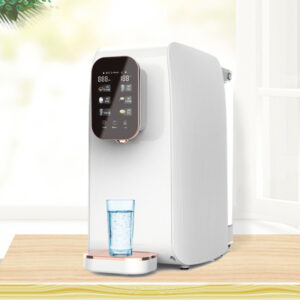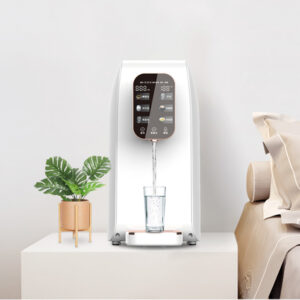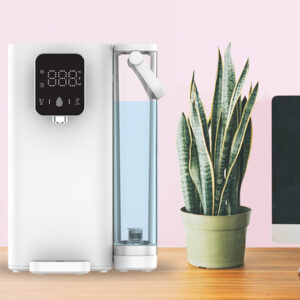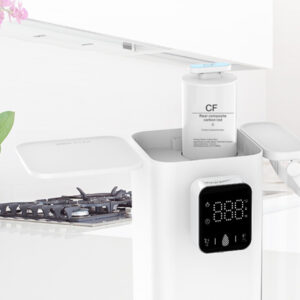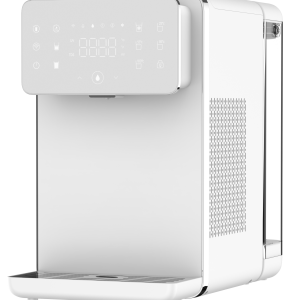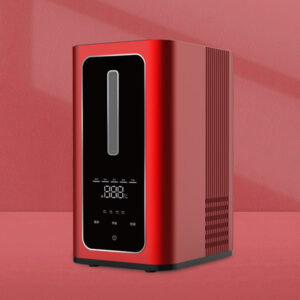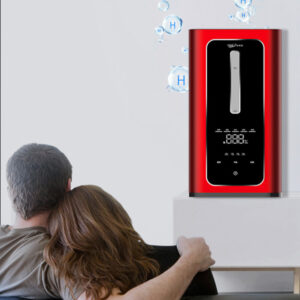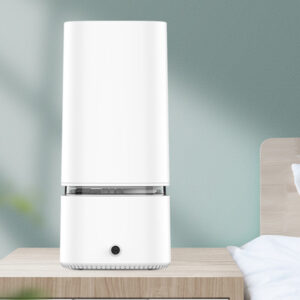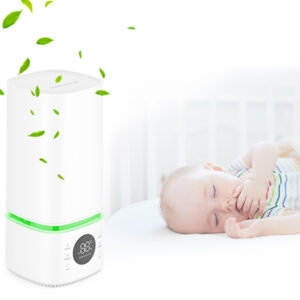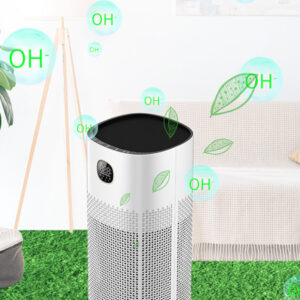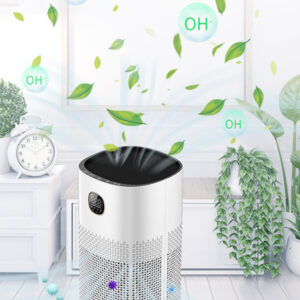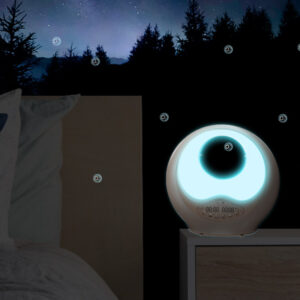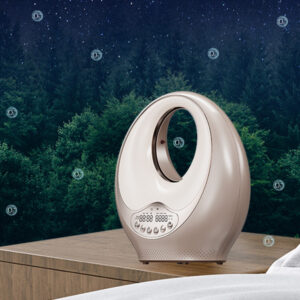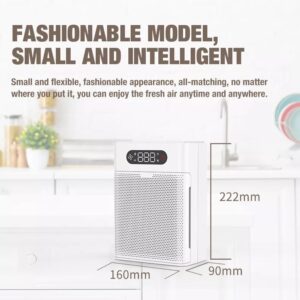Do Air Purifiers Remove Odors?
Do Air Purifiers Remove Odors?
Air purifiers have become increasingly popular in homes, offices, and other indoor spaces as people seek ways to improve air quality and create a more comfortable environment. These devices promise to remove a variety of airborne contaminants, such as dust, pollen, and smoke, making the air cleaner and healthier to breathe. However, one question that frequently arises is whether air purifiers can effectively tackle odors—those persistent smells from cooking, pets, smoke, or other sources that can linger and disrupt our daily lives. In this 2000-word article, we will explore the capabilities of air purifiers in removing odors, how they work, their effectiveness, limitations, and key considerations for choosing and using them. By the end, you’ll have a clear understanding of whether an air purifier is the right solution for your odor-related concerns.

What Are Air Purifiers and How Do They Work?
To determine whether air purifiers can remove odors, it’s essential to first understand what these devices are and how they function. Air purifiers are designed to clean indoor air by removing contaminants, improving air quality, and reducing potential health risks associated with polluted air. They achieve this through various technologies, with filtration being the most common method.
Types of Filters
HEPA Filters: High-Efficiency Particulate Air (HEPA) filters are widely regarded as the gold standard for capturing particulate matter. They can trap particles as small as 0.3 microns—including dust, pollen, mold spores, and some bacteria—with an efficiency of 99.97%. While HEPA filters excel at removing solid particles, they are not designed to handle gases, volatile organic compounds (VOCs), or odors.
Activated Carbon Filters: This is where air purifiers become relevant for odor removal. Activated carbon filters are made from carbon that has been treated to create a vast network of tiny pores, resulting in a large surface area. This porous structure allows the carbon to adsorb (not absorb) gaseous molecules, including VOCs and odorous compounds. When air passes through an activated carbon filter, the molecules responsible for odors stick to the carbon, effectively removing them from the air.
Additional Technologies
Some air purifiers incorporate other technologies, such as:
UV-C Light: Used to kill bacteria and viruses, but it has little impact on odors.
Ionizers: These release charged particles that cause pollutants to clump together, making them easier to trap. However, they are not specifically designed for odor removal.
For the purpose of eliminating odors, the activated carbon filter is the critical component. Not all air purifiers include this type of filter, so if odor removal is your goal, selecting a model with a robust activated carbon filter is essential.
Can Air Purifiers Effectively Remove Odors?
The short answer is yes—air purifiers can remove odors, but their effectiveness depends on several factors, including the type and quality of the filter, the strength of the odor, and whether the source of the smell is addressed.
The Role of Activated Carbon
Activated carbon filters are highly effective at adsorbing VOCs, which are organic chemicals that easily evaporate into the air and are often responsible for odors. Common sources of VOCs include cooking (e.g., frying onions), pet smells (e.g., wet fur or urine), and smoke (e.g., tobacco or wildfires). A larger carbon filter with more surface area can adsorb more odorous molecules before becoming saturated, making it more efficient over time. Some filters are even enhanced with substances like potassium permanganate to target specific odors or chemicals.
Factors Influencing Effectiveness
Filter Quality and Size: A high-quality, substantial activated carbon filter will outperform a small or low-quality one. The amount of carbon and its surface area directly impact how much odor it can remove.
Room Size: Air purifiers are rated for specific room sizes (e.g., 200 square feet). Using a unit that’s too small for the space will reduce its ability to circulate and clean the air effectively.
Source Control: Air purifiers can only remove odors that are already in the air. If the source—such as a smelly trash can or dirty carpet—remains, the device will continuously work to mitigate the odor but may not eliminate it entirely.
For example, an air purifier can significantly reduce the smell of last night’s curry from your kitchen, but if the greasy pan is still on the stove, the odor will persist until the source is cleaned.
Limitations of Air Purifiers in Odor Removal
While air purifiers can be effective, they are not a cure-all for every odor problem. Understanding their limitations is key to setting realistic expectations.
Incomplete Odor Removal
Some odors, particularly those from strong or persistent sources, may not be fully eliminated by an air purifier alone. For instance:
hemical Odors: Paint fumes or cleaning product smells might require additional ventilation or specialized equipment.
Mold Odors: A musty smell from mold will persist unless the mold is removed, as the air purifier can only treat the air, not the source.
Time and Capacity
Air purifiers don’t work instantly. It takes time for the device to cycle all the air in a room through its filters, and the process of adsorbing odors is gradual. In a heavily odorous environment, it might take hours or even days to notice a significant difference. Additionally, activated carbon filters have a finite capacity. Once saturated, they stop adsorbing new molecules and must be replaced.
Spatial Constraints
Air purifiers are designed to clean the air in a specific area. If odors are drifting in from another room or outside, a single unit may not suffice unless strategically placed or supplemented with additional devices.
Maintenance: Keeping Your Air Purifier Effective
Proper maintenance is crucial to ensure an air purifier continues to remove odors efficiently.
Filter Replacement
Activated carbon filters need to be replaced regularly, with frequency depending on the environment:
In a typical home: Every 3–6 months.
In a space with heavy odors (e.g., smoking or frequent cooking): Every 1–2 months.
Check the manufacturer’s recommendations and replace filters sooner if you notice a decline in performance or if they appear saturated.
Device Cleaning
Dust and debris can accumulate on the air purifier’s exterior and intake vents, reducing airflow and efficiency. Regularly wipe down the unit and ensure filters are properly installed to maintain optimal operation.
Some models include filter replacement indicators, which can simplify maintenance. Even without such features, periodic checks can help keep the device running smoothly.
Types of Odors and How Air Purifiers Handle Them
Not all odors are created equal. Here’s how air purifiers perform against different types:
Cooking Odors: From garlic to fish, these VOC-based smells are generally well-managed by activated carbon filters, especially with good kitchen ventilation.
Pet Odors: Smells from fur, dander, or accidents can be reduced, though regular cleaning (e.g., litter box maintenance) is essential for full control.
Smoke Odors: Tobacco or wildfire smoke can be challenging. Activated carbon helps, but heavy smoke may saturate filters quickly, requiring frequent replacements.
Mold and Mildew: Musty odors can be mitigated, but the underlying moisture and mold must be addressed.
Chemical Odors: Paint or cleaning product fumes can be partially removed, though ventilation is often more effective for quick dissipation.
Each odor type may require a tailored approach, but a quality air purifier with activated carbon can handle a broad range.
Real-Life Examples of Air Purifiers in Action
To see how air purifiers work in practice, consider these scenarios:
Pet-Friendly Home: A family with dogs notices a lingering pet smell in their living room. After using an air purifier with a large carbon filter for a few days, the odor is noticeably reduced, enhancing the space for visitors.
Small Apartment: A couple who cooks daily finds that food smells linger in their cramped space. An air purifier in the kitchen clears the air quickly, preventing odors from spreading.
Office Break Room: Employees complain about stale air and lunch smells. An air purifier improves the environment, making it more pleasant for staff.
Hospital Setting: Air purifiers in patient rooms reduce odors from disinfectants and bodily fluids, contributing to a cleaner, more comfortable atmosphere.
These examples highlight the versatility of air purifiers across different settings.
Common Misconceptions About Air Purifiers and Odors
Several myths surround air purifiers and their odor-removing abilities:
All Air Purifiers Remove Odors: Only those with activated carbon filters can tackle odors—HEPA-only models won’t help.
Instant Odor Elimination: Reduction takes time and may not be complete if the source persists.
No Maintenance Needed: Filters must be replaced regularly to maintain effectiveness.
One-Size-Fits-All: The right model depends on room size, odor type, and filter quality.
Understanding these truths can help you use air purifiers more effectively.
Costs and Energy Consumption
Air purifiers come with both initial and ongoing costs:
Purchase Price: Ranges from $50 to over $500, with odor-focused models often pricier due to carbon filters.
Filter Replacements: $20–$100 every few months, depending on the model and usage.
Electricity: Continuous operation adds to your bill, though most units are energy-efficient.
The benefits—better health, comfort, and air quality—often justify the expense, especially for allergy sufferers or those in odorous environments.
Alternatives to Air Purifiers
Other methods can complement or replace air purifiers:
Ventilation: Opening windows or using fans expels odorous air.
Air Fresheners: These mask smells but don’t remove them and may add chemicals.
Natural Remedies: Baking soda or vinegar absorb some odors, though less effectively.
Cleaning: Regular upkeep prevents odor buildup.
For persistent smells, air purifiers typically outperform these alternatives.

Conclusion and Recommendations
So, do air purifiers remove odors? Yes, they can—particularly those with activated carbon filters—but their success depends on the filter quality, odor type, and proper use. Here’s how to maximize their effectiveness:
Choose Wisely: Opt for a model with a substantial carbon filter, sized for your room.
Maintain Regularly: Replace filters as needed and clean the unit.
Address Sources: Combine air purification with cleaning and ventilation.
Be Realistic: Expect significant reduction, not total elimination, of odors.
In conclusion, air purifiers are a powerful tool for managing indoor odors, offering a practical solution for fresher, cleaner air. Whether you’re battling pet smells, cooking odors, or smoke, the right air purifier can make a meaningful difference in your space.
For more about do air purifiers remove odors, you can pay a visit to Olansi at https://www.olansgz.com/product-category/air-purifier/ for more info.



